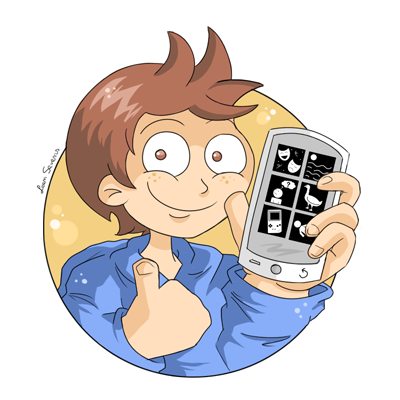About
The demo
Our demos showcases the Text2Picto translation technologies, originally developed from 2012, to improve the accessibility of the Internet for people with an intellectual disability. The Dutch translation technologies are used on the safe web environment WAI-NOT.
The original Text2Picto web demo (i.e., the web demo for Dutch without advanced natural language processing solutions) was implemented by Vincent Vandeghinste within the "Picto" framework (2012-2014), a project financed by the Steunfonds Marguerite-Marie Delacroix to enhance communication for people with reading disabilities. The Cornetto database was used to link pictographs to words, with the help of Ineke Schuurman.
The English and Spanish Text2Picto web demos were implemented by Leen Sevens and Vincent Vandeghinste within the "Able to Include" framework (2014-2017), which sought to improve the living conditions of people with an intellectual disability. The Princeton WordNet and the MCR 3.0 for Spanish databases were used to link pictographs to words.
The most recent versions of the Dutch Text2Picto web demos were implemented by Leen Sevens as part of her PhD project "Words Divide, Pictographs Unite" (2015-2018) at KU Leuven under the supervision of Frank Van Eynde and Vincent Vandeghinste. This project was funded by the Agentschap Innoveren & Ondernemen. The project was later extended with pictographs from De Rand. More info (in Dutch) can be found here. A version for French and ARASAAC was developed by Magali Norré in the context of her PhD Traduction automatique du français vers les pictogrammes pour améliorer la communication entre médecins et patients avec une déficience intellectuelle en milieu hospitalier. (Automatic Translation from French into Pictographs to Improve Communication between Doctors and Patients with an Intellectual Disability in Hospitals), defended in 2025.
The pictograph sets
The Beta system was developed as a visual, communication-supportive system, from the conviction that other pictographic systems were too abstract or too systematic.
The Sclera website and pictographs were designed at Terninck, a day care centre for adults with a cognitive disability. The targeted group made use of a special calendar filled with black and white images, which helped them to give shape to their weekly activities.
The De Rand pictograph database was developed in the context of language learning.
ARASAAC offers graphic and material resources adapted with a Creative Commons license(BY - NC - SA) to facilitate communication and cognitive accessibility to all people who, due to different factors(autism, intellectual disability, lack of language, elderly people, etc.), present serious difficulties in these areas, which hinder their inclusion in any area of daily life.
This project is funded by the Department of Culture, Sports and Education of the Government of Aragon (Spain). Specifically ARASAAC belongs to the area of innovation and professional training
The Centre for Computational Linguistics at KU Leuven
Our main objective is to contribute to basic research in formal and computational linguistics, and to the application of this research in natural language processing.
The Centre for Computational Linguistics builds on the expertise acquired during the eighties within the framework of various NLP projects.
It has been involved in many European and national projects in the fields of machine translation (Eurotra, Siemens-Metal, METIS-I, METIS-II, PaCo-MT, Picto) and other branches of computational linguistics.
It is also the coordinator of CLARIN-VL. CLARIN is an ESFRI project.

